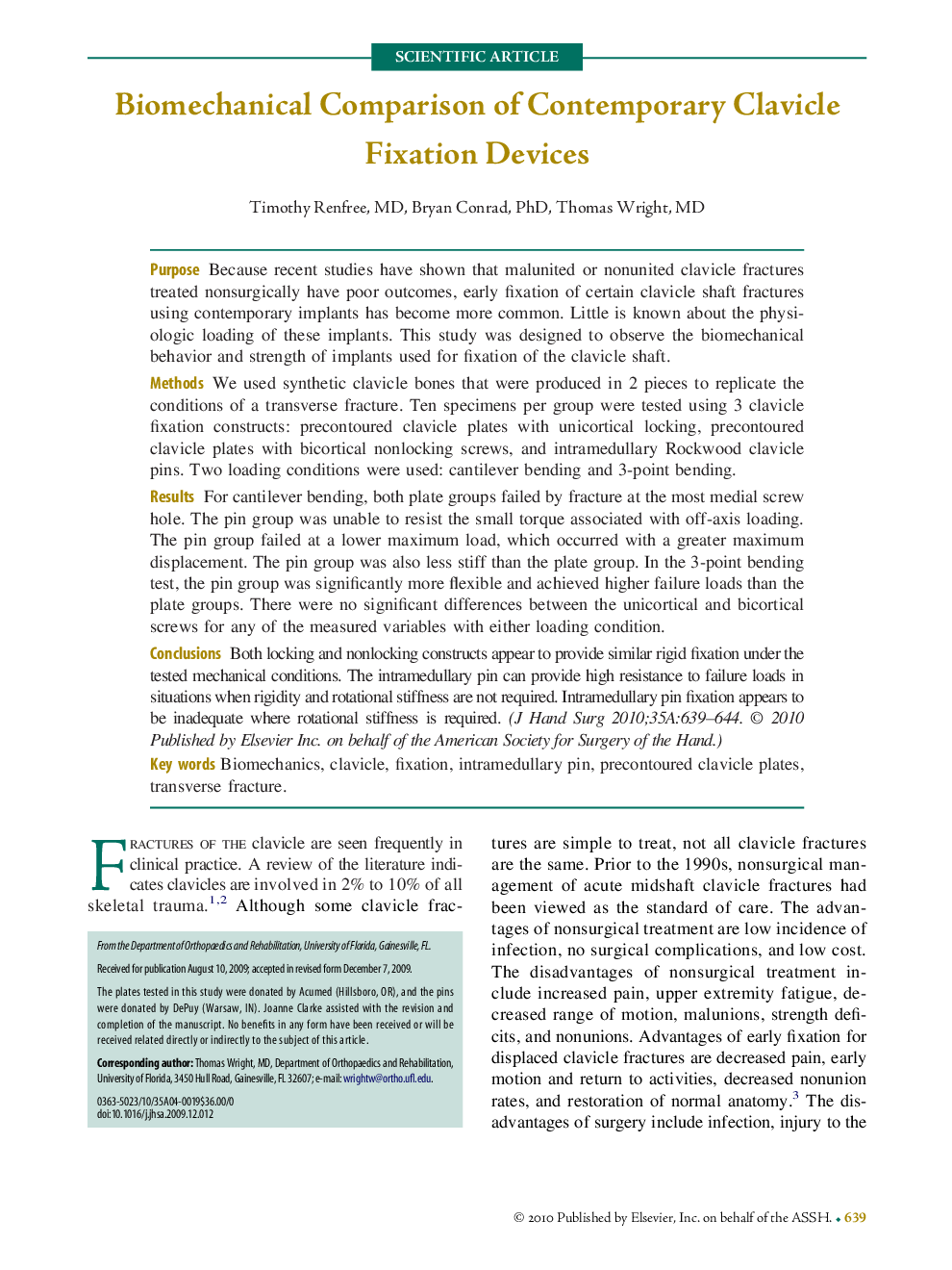| کد مقاله | کد نشریه | سال انتشار | مقاله انگلیسی | نسخه تمام متن |
|---|---|---|---|---|
| 4071140 | 1604423 | 2010 | 6 صفحه PDF | دانلود رایگان |

PurposeBecause recent studies have shown that malunited or nonunited clavicle fractures treated nonsurgically have poor outcomes, early fixation of certain clavicle shaft fractures using contemporary implants has become more common. Little is known about the physiologic loading of these implants. This study was designed to observe the biomechanical behavior and strength of implants used for fixation of the clavicle shaft.MethodsWe used synthetic clavicle bones that were produced in 2 pieces to replicate the conditions of a transverse fracture. Ten specimens per group were tested using 3 clavicle fixation constructs: precontoured clavicle plates with unicortical locking, precontoured clavicle plates with bicortical nonlocking screws, and intramedullary Rockwood clavicle pins. Two loading conditions were used: cantilever bending and 3-point bending.ResultsFor cantilever bending, both plate groups failed by fracture at the most medial screw hole. The pin group was unable to resist the small torque associated with off-axis loading. The pin group failed at a lower maximum load, which occurred with a greater maximum displacement. The pin group was also less stiff than the plate group. In the 3-point bending test, the pin group was significantly more flexible and achieved higher failure loads than the plate groups. There were no significant differences between the unicortical and bicortical screws for any of the measured variables with either loading condition.ConclusionsBoth locking and nonlocking constructs appear to provide similar rigid fixation under the tested mechanical conditions. The intramedullary pin can provide high resistance to failure loads in situations when rigidity and rotational stiffness are not required. Intramedullary pin fixation appears to be inadequate where rotational stiffness is required.
Journal: The Journal of Hand Surgery - Volume 35, Issue 4, April 2010, Pages 639–644